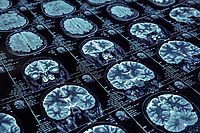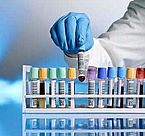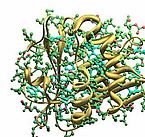Please type a search term (at least two characters)
Highlights from health projects
Multidisciplinary measurement solutions for healthcare
For the first time, the European metrology community is working collectively to conduct the healthcare research needed to improve measurements and analysis. EURAMET established a multidisciplinary Health Task Group and a Health research theme under its European Metrology Research Programme to bring together metrology expertise in physics, chemistry and biology to support improved diagnosis and treatment of medical conditions. The European Commission and national governments invested €74M in health focused collaborative research, involving research groups in 28 European National Metrology Institutes and Designated Institutes, 46 academic groups and 40 businesses and healthcare providers.
Improved MRI imaging, improved patient safety

New MRI scanners, using high strength 7 Tesla magnetic fields, provide more detailed images and improve diagnoses. But before these can be used routinely they must comply with international safety standards. EMRP project Metrology for next-generation safety standards and equipment in MRI developed numerical procedures to compute radio-frequency fields throughout the patient's body, and measurement tools to check and validate these simulations. As a result, novel protocols can more accurately calculate safe exposure levels and demonstrate that these scanners are safe to use. Together with contributions to a new international IEC standard for safety verification and certification of new MRI scanners, the research has helped to establish guidelines for safe scanner design, paving the way for their adoption in clinical practice.
Innovation in diagnosis

Extracellular vesicles are cell fragments present in body fluids, such as blood and urine. They have a role in inter-cell communication and also in the spread of diseases such as cancer. This unique role gives them the potential to be used for new non-invasive methods of early diagnosis, drug efficacy studies and drug delivery. EMRP project Metrological characterisation of micro-vesicles from body fluids as non-invasive diagnostic biomarkers identified the optimal procedures for collection, preparation and storage of extracellular vesicles, and standardised ways of measuring their size and population. Many international research groups have adopted these procedures and have improved the comparability of results. A simple extracellular vesicle extraction methods for preparing blood samples for disease study is now commercially available helping to promote the use of these important inter-cellular disease communicators in diagnosis.
Designing new antibiotics

Diseases are becoming increasingly resistant to antibiotics, limiting treatment options. Developing new antibiotics is costly and time consuming with no guarantee of success or commercial return on the investment. EMRP project Metrology for biomolecular origin of disease established a new design tool that can cost-effectively link the molecular structure of a potential antibiotic to the desired therapeutic effect. This enables the prediction and monitoring of biological processes at the molecular and cellular level for a range of medical applications. The research has, in collaboration with the academic community, already generated a new antibiotic which can be delivered through the skin and has the potential for creating the next-generation of antibiotics.
